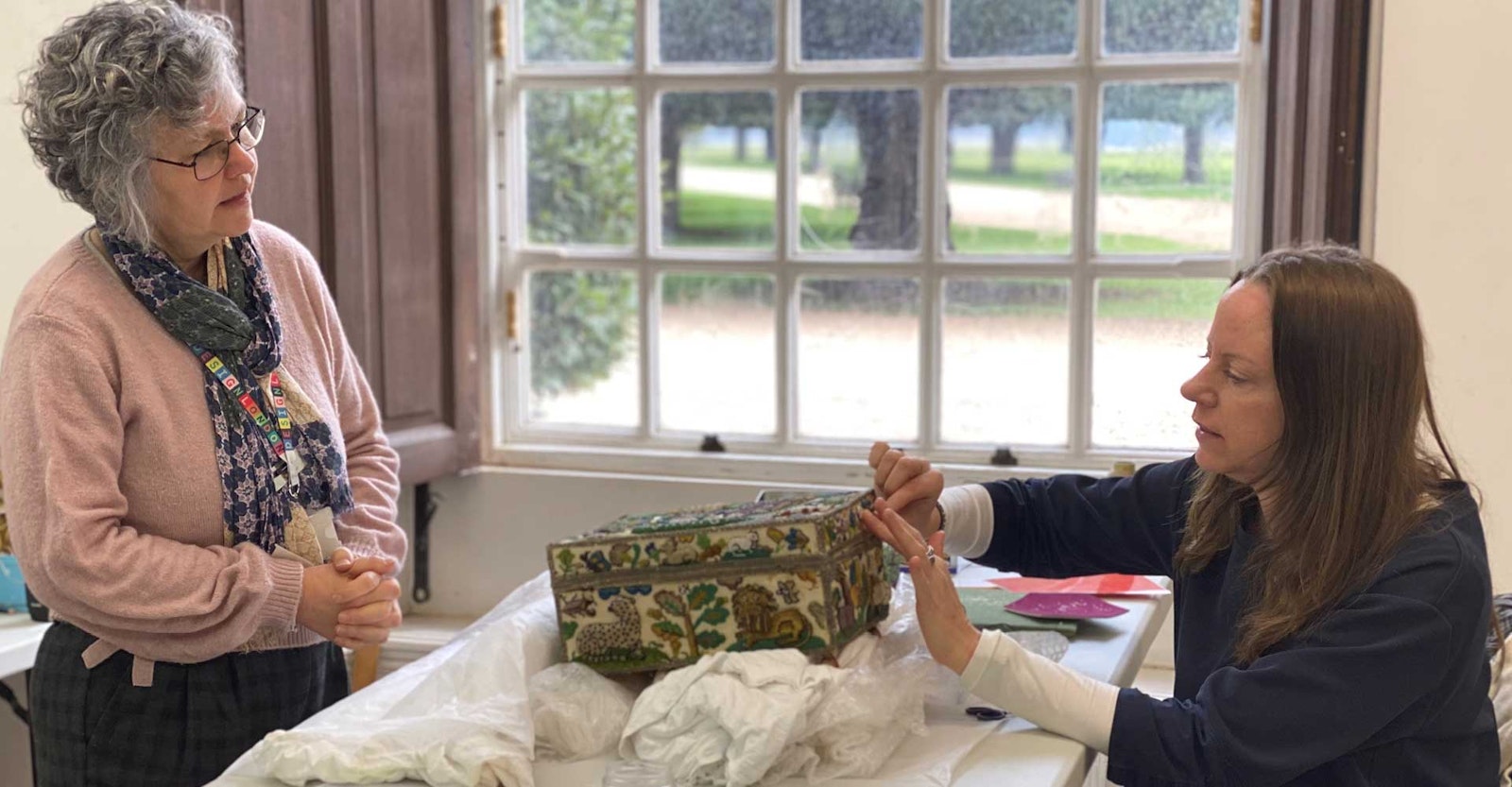Anne Butcher tells us about her work with the Royal School of Needlework in the United Kingdom.
How did you become a needleworker?
I have always been a practical person, even as a child, and after receiving an embroidery kit when I was thirteen years old, I was hooked on embroidery.
Tell us how you came to join the Royal School of Needlework (RSN).
I was given a copy of the RSN Friends newsletter, which featured an article about being an RSN Apprentice. This inspired me to apply, and I started at sixteen as an apprentice in 1982. Next year, it will be my fortieth anniversary at the RSN! I am now Head of Studio and Teaching, which has been my role since 2015.
What types of classes and programs does the RSN offer, and how have they changed over the years?
We offer a range of courses for beginners through advanced. Students can choose to study a variety of classes online and on-site, including day and evening classes and the Certificate and Diploma in Technical Hand Embroidery. The RSN also offers the BA (Hons) Hand Embroidery degree and the Future Tutors Programme, which trains tutors for the next generation. We teach across the United Kingdom, in North America and Japan, and online. We also host Online Talks each month.
I have seen the organization develop hugely over the years, including expansion, moving locations, and the introduction of live online classes during the global pandemic. The latter has been the biggest recent development for us, and we’re enjoying teaching students online. Students just need access to Zoom, ideally on a screen bigger than a phone, but smartphones can be useful for sending images of work to the tutor on WhatsApp. We have taught people of all ages, and the main comment has been how much like a face-to-face class the Zoom classes are!
Tell us about the Embroidery Studio at the RSN.
The RSN Embroidery Studio is based at Hampton Court Palace. Our team of expert embroiderers create bespoke commissions for the future as well as bring historical textiles back to life. We conserve and restore textiles, breathing new life into fragile and treasured pieces, from large projects, such as embroidered wall hangings and pieces of art, to smaller personalized cushions and badges. We feel very privileged to be able to work on such treasured possessions. Each piece comes with its own unique story, and it is wonderful to be able to keep that story alive by conserving or restoring it.
Tell us about a memorable or especially challenging needlework project that you’ve worked on.
Our clients include private individuals, fashion designers, places of worship, TV/film production companies, and the Royal Family. One of the most memorable projects I have worked on is the wedding dress of Kate Middleton, now the Duchess of Cambridge. The lace design and process was influenced by traditional Carrickmacross lace which originated in Ireland in the 1820s. Carrickmacross lace uses the appliqué technique and is worked by applying organdy fabric to a delicate net background and edging each motif with fine cord-like thread. Each lace motif (some as small as a five-pence piece) was applied with minute stitches every two to three millimeters. We washed our hands every 30 minutes to keep the lace and threads pristine; needles were renewed every three hours and only short lengths of thread were used, each no longer than 30 centimeters. Also, to maintain an even appearance, no securing knots were used as it was important that the back of the work looked as neat as the front, another RSN hallmark. It was an absolute honor to work on the wedding dress and such an exciting time at the RSN.
What project are you currently working on?
We have been working on a range of conservation projects, from tablecloths, stitched samplers, and chair covers to altar frontals. Conservation work may entail canvas reweaving, surface cleaning, mounting, and much more. No two pieces are the same, but based on our experience over time of handling different examples, we know the best way to conserve and restore them.
How does historical needlework influence your own needlework?
The RSN’s unique textile and archive collection provides us with a huge resource and library of not only embroideries but also designs. We often use these designs to restore a motif that has worn away on a textile to ensure it is relevant to that period of time.
What advice do you have for stitchers who want to improve their needlework skills?
Everyone starts somewhere. We run Introduction to Embroidery classes that are suitable for the complete beginner. The classes cover everything from threading a needle and tying a knot (yes, there is a professional way to do this!) to ensuring a comfortable sitting position, to how to use an embroidery hoop and determining the best length for your thread. Once you have the basics right, then you can learn a variety of techniques and start creating beautiful work.

Left: Project from the metalwork online day class at the RSN. Right: From the archive: RSN stitchers working on the Queen Mother’s coronation robe
Learn more at royal-needlework.org.uk.
This article first appeared in PieceWork Winter 2021.

